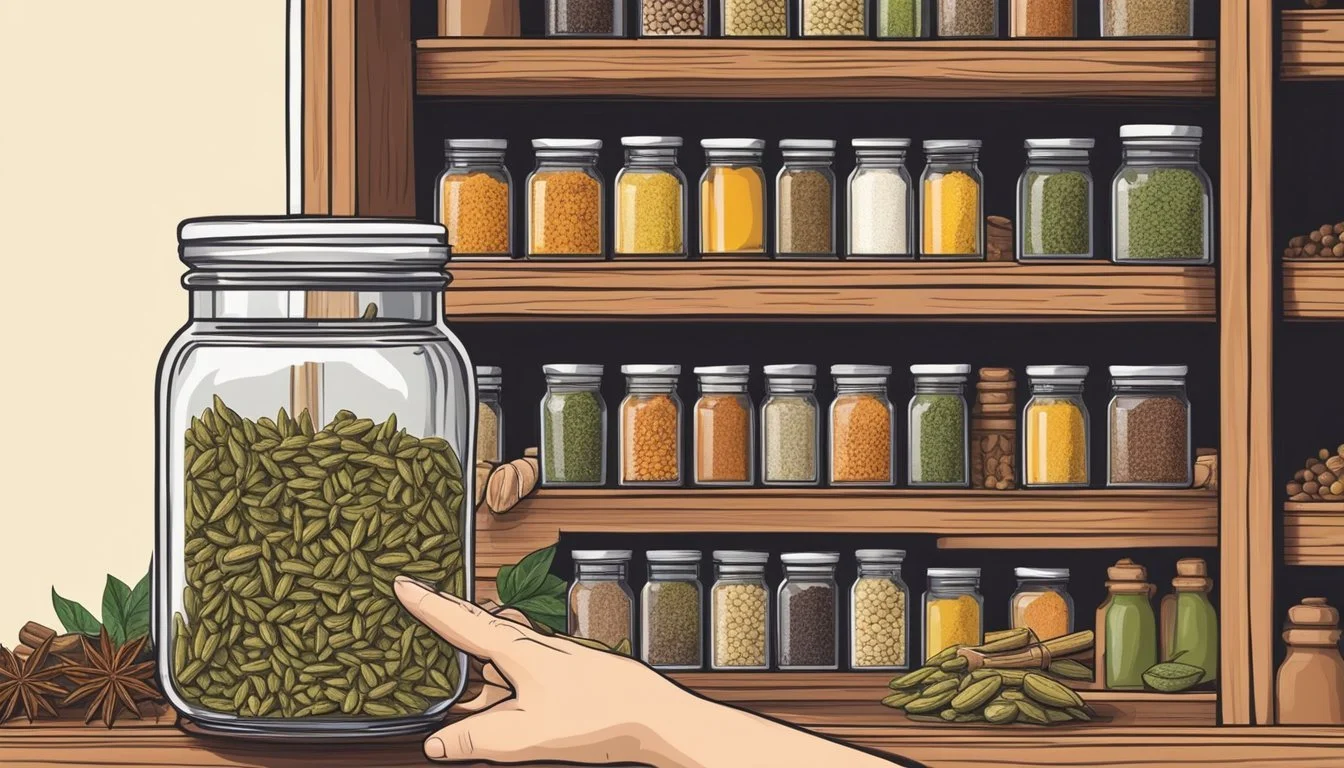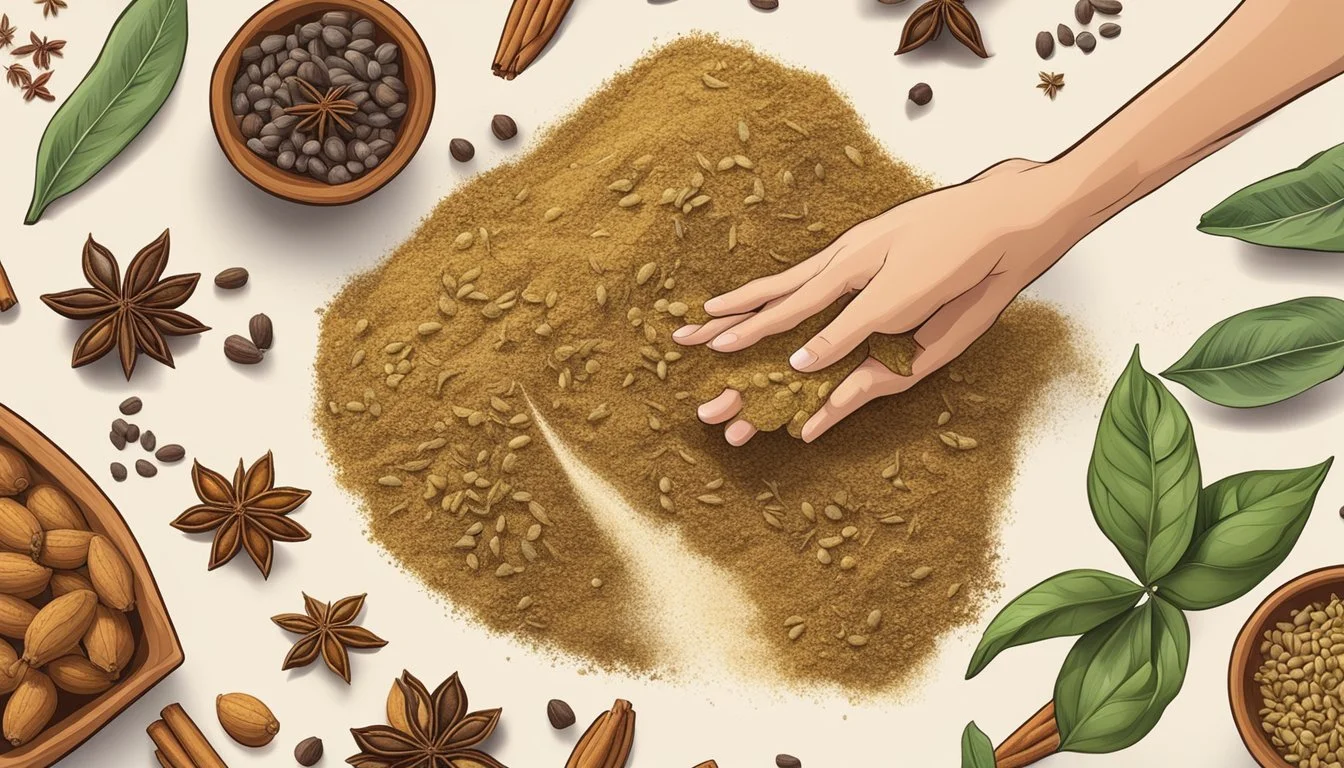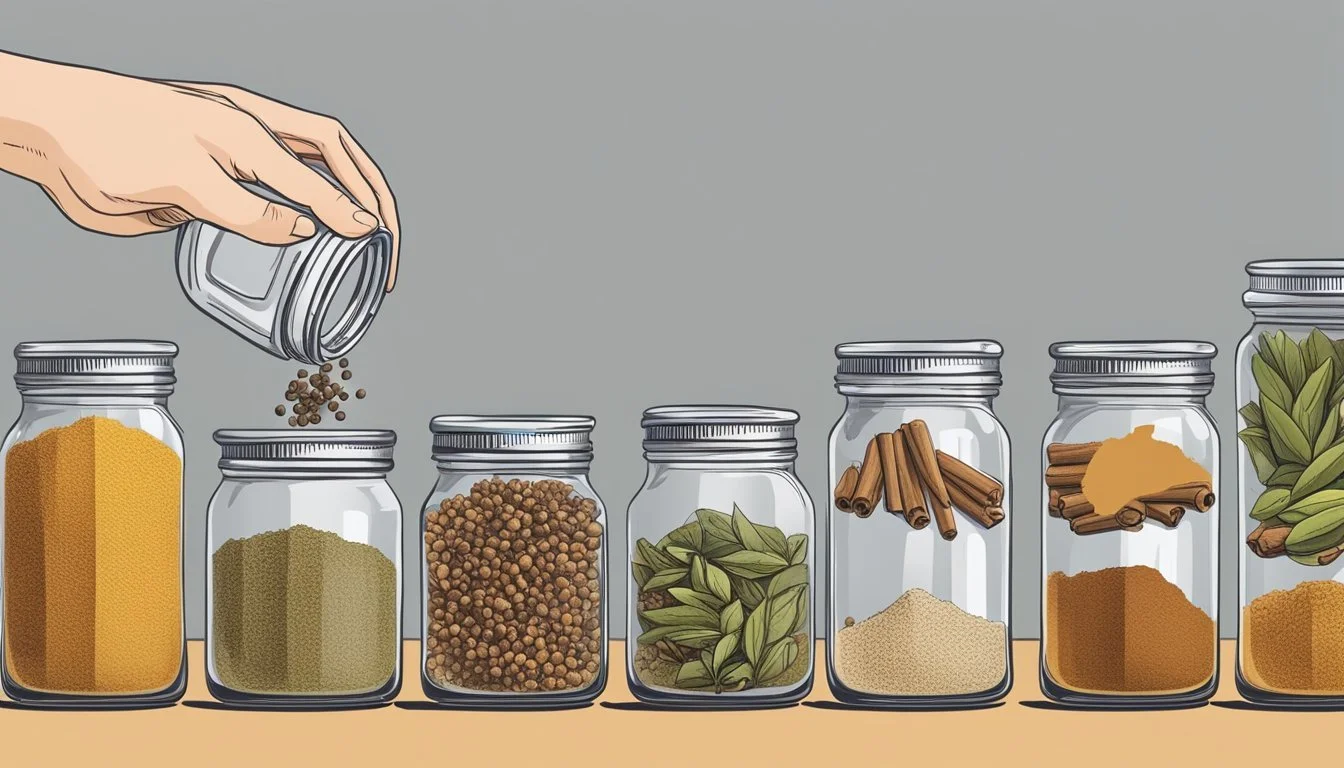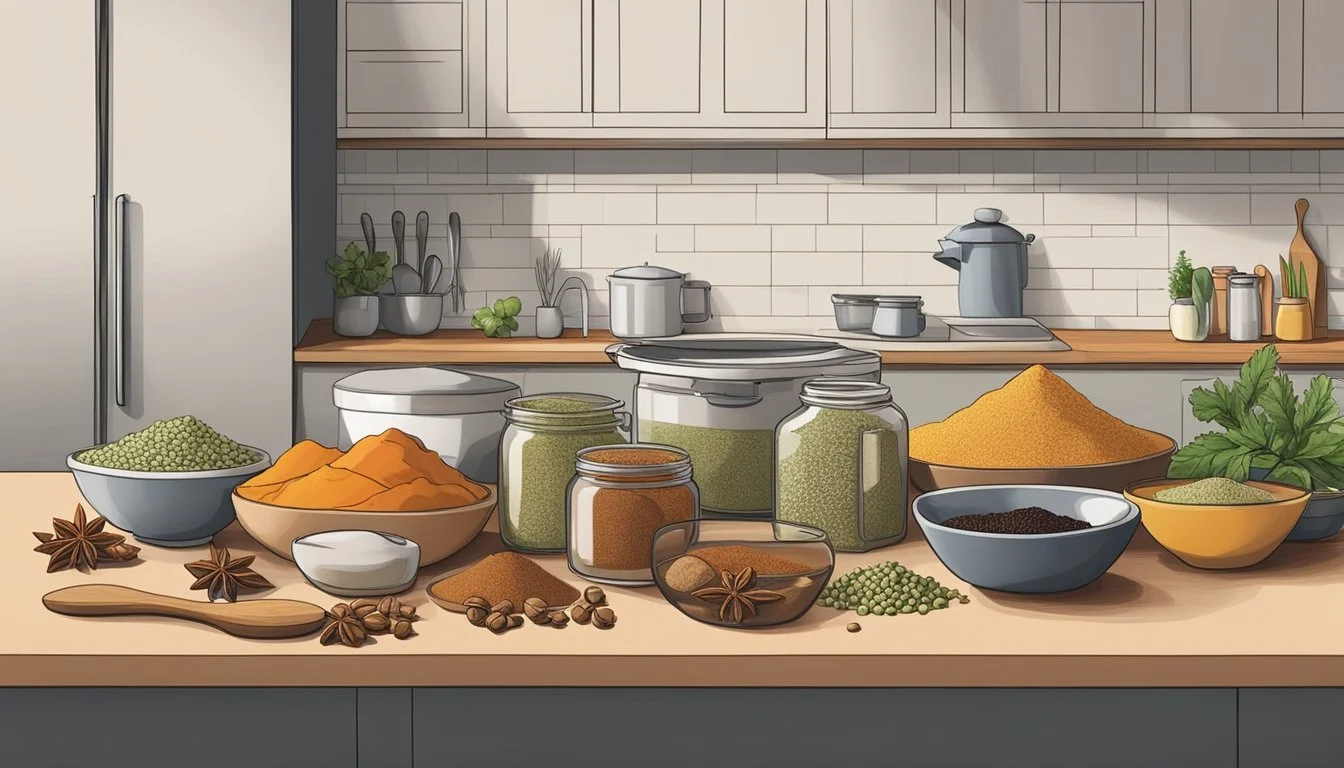Cardamom Substitutes
Best Alternatives for Your Recipes
Cardamom is a versatile spice widely used in various global cuisines, from South Asian to Scandinavian dishes, known for its unique and pungent flavor profile that is both spicy and sweet with a hint of citrus. The complexity of cardamom's taste makes it a key ingredient in sweet and savory recipes alike. However, its distinct flavor and sometimes limited availability can pose a challenge for home cooks and professional chefs when it's called for in a recipe.
When cardamom is unavailable or someone is seeking an alternative due to personal preferences or dietary restrictions, several substitutes can provide a similar flavor profile to a dish. A blend of ground cinnamon and nutmeg can mimic cardamom's warmth and sweetness, while a combination of cinnamon and cloves can offer the necessary spice. For savory dishes, ground coriander serves as a suitable substitute due to its slightly bitter and floral notes that are reminiscent of cardamom's aromatic characteristics.
Understanding Cardamom
Cardamom is a highly prized spice, belonging to the ginger family, known scientifically as Elettaria cardamomum. It originates from the lush forests of Southern India but has since been cultivated in other tropical regions like Guatemala. The spice is renowned for its intense aroma and complex flavor profile, which includes hints of citrus, mint, spice, and a subtle sweetness.
There are two main types of cardamom: green and black. Green cardamom is often regarded as true cardamom. It's available in whole pods, which are small, green, and papery, with the seeds inside responsible for the main flavor impact. It's widely used in both sweet and savory dishes, admired for its versatility and milder flavor.
On the other hand, black cardamom, known as Amomum subulatum, is bolder and smokier in taste due to a different drying process, involving smoke that also gives it a darker hue. This variant is commonly utilized in robust savory dishes, particularly in the cuisines of the Near and Far East.
To utilize cardamom effectively, the whole pods can be lightly crushed to release the seeds, which are then either used whole or ground to a fine powder. As a spice, cardamom's aromatic quality infuses well into dishes and is a staple in many cultural cuisines, particularly in South Asian and Middle Eastern cooking.
Flavor: citrus-like, sweet, spicy
Main types: green and black cardamom
Preferred form: whole seed pods to retain flavor
Common uses: both in sweet and savory dishes
Common Uses of Cardamom
Cardamom is a versatile spice with a complex flavor profile, combining a hint of sweetness with a refreshing, aromatic note. It's commonly used in both sweet and savory dishes.
In savory foods, chefs incorporate cardamom to bring depth and intrigue to curries and pilaus, which are staple dishes in Indian cuisine. The spice's robust nature pairs exceptionally well with meats, enhancing the flavors with its unique essence.
Table 1: Cardamom in Savory Dishes
Savory Dish Description Curries Cardamom adds complexity to spice blends. Meat Dishes Complements and enriches meaty flavors. Pilaus Provides an aromatic touch to rice dishes.
For sweet treats, cardamom is an essential component in a variety of pastries and desserts, particularly those from the Middle East. It imparts a distinctive taste that is cherished in traditional baking. The spice is also a key ingredient in garam masala, a spice blend used across numerous Indian dishes for its aromatic warmth.
Table 2: Cardamom in Sweet Dishes
Sweet Dish Description Pastries Offers a fragrant kick to baked goods. Desserts Adds a subtle but noticeable spice note.
It is not uncommon to find cardamom at the heart of spice blends crafted for specific recipes, especially in the world of baking where it can be a standout ingredient in spiced cakes or aromatic breads.
Whether grounded or in pod form, cardamom continues to be a treasured spice in global cuisines, favored for its ability to elevate dishes with its unmistakable character.
Why Substitute Cardamom?
Cardamom is renowned for its complex flavor, combining elements of sweetness, spice, and an aromatic undertone. However, various factors may necessitate finding an alternative.
Expensiveness: As one of the most expensive spices by weight, cardamom can affect the budget of a recipe, especially when needed in large quantities. It's not a staple in every kitchen due to its cost.
Availability: Depending on one's location and the local market, cardamom may not be readily available. It is less common in some communities, making it difficult for home cooks and professional chefs to source it regularly.
Allergic Reactions: Rare but possible, allergies to cardamom may compel individuals to seek a substitute for this spice to ensure their dishes are allergen-free.
Adulteration: The spice market at times faces the issue of adulterated cardamom, where the purity is compromised. Consumers seeking unadulterated flavor may opt for alternatives they trust.
Reason for Substitution Details Expensive Spice Affects recipe budgeting and not always a cost-effective option Availability Might not be readily accessible in all regions Allergies Can provoke allergic reactions in some individuals Adulterated Content Risk of encountering impure cardamom
While substitutes may not replicate cardamom's distinct taste profile exactly, they provide a workaround that caters to the above constraints. They are chosen for their ability to impart a similar aromatic note or blend harmoniously into the intended flavor palette of a dish.
Best Cardamom Substitutes
When a recipe calls for cardamom and it's unavailable, several other spices can serve as effective substitutes. Each alternative offers a different aspect of cardamom's flavor profile, from warm and sweet to earthy and citrusy.
Cinnamon
Cinnamon is often used for its warm, sweet characteristics that mimic cardamom's sweetness. To replace cardamom in sweet dishes such as desserts or spiced teas, use ground cinnamon in a one-to-one ratio.
Ginger
If one desires the slightly spicy, citrus note that cardamom imparts, ginger is an excellent substitute. It works well in both savory and sweet recipes and should be used in a slightly smaller quantity than cardamom to avoid overpowering the dish.
Nutmeg
For a deep, warm taste similar to cardamom, nutmeg is a favorable replacement. Nutmeg's sweet yet slightly woody flavor makes it ideal for baking and dessert applications. Use nutmeg sparingly, as its flavor is potent.
Allspice
Allspice carries a blend of flavors reminiscent of cloves, cinnamon, and nutmeg. It is a versatile cardamom substitute that can enhance the taste of many dishes. One should substitute allspice for cardamom in equal measures for a balanced flavor.
Cumin
Cumin offers an earthy, warm flavor that, while distinct from cardamom, can occupy a similar role in savory recipes. Cumin is best used in dishes like curries and should be used conservatively to prevent it from dominating the flavor profile.
Coriander
Lastly, coriander seeds have a slight citrusy flavor that can mimic cardamom's floral notes. It's particularly useful in savory dishes and is commonly used alongside cumin. When substituting, use ground coriander seed in the same amount as whole cardamom pods or ground cardamom.
How to Substitute
When a recipe calls for ground cardamom and it’s unavailable, there are several suitable substitutes that can mimic its warm, spicy-sweet flavor. Each substitute offers a unique profile and can be used in different measurements to achieve a similar taste and texture in baking and cooking.
Cinnamon and Nutmeg: For a warm, spicy flavor, a mix of cinnamon and nutmeg can replace cardamom. They recommend using equal parts of each to balance the flavors.
Ratio: 1:1 mix of cinnamon and nutmeg to the amount of cardamom required.
Cinnamon and Cloves: Cloves, when combined with cinnamon, can replicate the complex spiciness of cardamom, especially in savory dishes.
Ratio: Mix equal parts cinnamon and ground cloves to substitute for cardamom.
Mace: Mace, being less spicy and more floral, can be a delicate substitute for cardamom.
Ratio: Use a 1:1 ratio of mace to replace cardamom, keeping in mind mace's lighter nature.
Ginger or Coriander: Ground ginger or coriander provides warmth and earthiness, suitable for dishes where the citrusy undertones of cardamom are desired.
Ratio: Substitute an equal amount of ginger or coriander for cardamom.
The texture of the dish should not be largely affected by these substitutions. However, one should adjust the measurements of liquids, flour, butter, or dairy, only if the texture seems noticeably altered. It’s vital to start with a conservative amount and adjust to taste, as each spice brings its own potency and can easily overwhelm a dish if used excessively.
Regional Substitutes
When seeking substitutes for cardamom, considering regional flavors that align with the spice's aromatic profile can provide authentic alternatives.
Middle Eastern Flavors
In Middle Eastern cuisine, where cardamom is frequently used for its cineole and limonene content, mace is a suitable alternative. Mace imparts a lighter, more floral taste and pairs well with other regional spices. For many recipes, it captures the essence of cardamom's flavor without overpowering the dish.
South Asian Alternatives
South Asia, especially India, is known for its extensive use of cardamom. Here, a blend of ground cloves and nutmeg can mimic cardamom's warm and slightly sweet notes. This combination is particularly effective in dishes where a rich aroma is desired.
Ground Cloves: Provides a deep, warming spice.
Nutmeg Powder: Adds a sweet, nutty, and slightly woody flavor.
Scandinavian Variants
Cardamom is central to Scandinavian baking and can be substituted with a mixture of cinnamon and cloves. This duo delivers a comparable complexity that cardamom offers to traditional Scandinavian pastries and bread.
Cinnamon: Contributes a sweet and woody flavor.
Cloves: Complements with a bold, spicy essence.
Each of these substitutes brings their own unique qualities to a dish and can be used depending on personal taste preferences and the recipe's requirements.
Cultural and Historical Context
Cardamom, a prized spice belonging to the ginger family, has a rich tapestry of cultural significance spanning multiple civilizations. The ancient Egyptians utilized cardamom for its fragrance, so much so that it found its way into perfumes and was integral in embalming rituals. The spice's aromatic properties positioned it as an invaluable item within these communities.
In addition to its use in Egypt, cardamom was held in high esteem by the Vikings, who came across it during their travels and integrated it into their own culinary practices. Its history is similarly deep-rooted in places like Sri Lanka and Nepal, where it naturally thrives due to the ideal climate conditions. These regions contributed to spreading cardamom through trade with nearby civilizations.
In England, cardamom's unique flavor and digestive aids were celebrated, contributing to its incorporation into spice mixes and medicinal concoctions. It was often chewed for dental health, aiding in keeping breath fresh.
Given its similarity to the revered and expensive saffron in terms of offering a distinct and powerful flavor, cardamom became a valuable commodity. The communities that cultivated cardamom held a significant role in its global distribution.
Cardamom Table
Region Use of Cardamom Significance Egypt Perfumery, Rituals Aromatic Essential Sri Lanka Trade, Culinary Native Spice, Economically Vital Nepal Cultivation, Community Integral to Local Economy England Medicinal, Culinary Valued for Digestive Properties
In essence, this spice not only enhanced the taste and fragrance of various recipes but also permeated the fabric of the respective cultures by forging connections through its use in community gatherings and traditional ceremonies.
Selecting Quality Substitutes
When seeking alternatives for cardamom, one must consider flavor compatibility to maintain the dish's integrity. Here are considerations for selecting a quality substitute:
Flavor Profile: Choose a substitute that mirrors cardamom's aromatic warmth. Cinnamon, nutmeg, and mace are popular because they share a similar fragrant quality.
Substitute Flavor Notes Best Used In Cinnamon Sweet, woody Desserts, pastries Nutmeg Sweet, nutty, slightly woody Baked goods, sauces Mace More delicate than nutmeg, slightly floral Baking, sauces Cloves Warm, slightly astringent Meaty stews, broths Coriander Slightly citrusy, nutty Savory dishes
Taste Test: It is crucial to review the spice in question before incorporating it into a recipe. One must assess whether the substitute's taste and aroma are harmonious with the original recipe's intention.
Capsule Content: As cardamom is typically sold in capsules, consider the ease of replicating its essence. For example, grinding your substitute—like cinnamon sticks or nutmeg—freshest results.
Economic Factor: Being an expensive spice, cardamom alternatives can offer a cost-effective solution without compromising too much on taste. Stick to what is readily available and affordable—cloves or ginger for instance.
Aromatic Integrity: Ensure the substitute is appropriate for the dish's aroma. For savory dishes, black cardamom has a smoky character, while white cardamom is milder and better suited for sweets.
Remember, each spice has its unique character and cannot mimic cardamom exactly. Substitutions should be made considering the dish's overall flavor palette.
Cardamom in Modern Cuisine
Cardamom, a spice native to South Asia, has taken a prominent place in contemporary kitchens around the globe. Its complex and distinctive flavor is a cherished addition in various dishes, infusing them with its aromatic presence.
In modern cooking, chefs frequently employ cardamom to add depth to Asian curries and pastries, capitalizing on its unique ability to enhance both savory and sweet profiles. Cooking innovations have seen cardamom transcend traditional boundaries, finding its way into experimental dishes that fuse culinary worlds.
Cardamom's versatility is showcased in its use in dairy products such as flavored yogurts and creams, where its subtle warmth complements the richness of dairy. Furthermore, its presence is now quite common in desserts, ranging from cardamom-infused cakes to delicate custards, elevating the flavors with its signature notes.
In the realm of baking, bakers appreciate cardamom's potential to bring a nuanced spiciness to breads and cookies. It’s become a staple in the baking repertoire for artisanal and home bakers alike.
Culinary Application Description Asian cuisines Integral in enhancing the depth of flavors in curries and rice dishes. Dairy enhancements Adds an exotic twist to ice creams, yogurts, and milk-based desserts. Desserts and sweets Provides a fragrant note to puddings, pies, and other confections. Innovative baking Elevates traditional baking recipes with its warm, spicy undertones.
They have successfully harnessed cardamom's potential to create dishes that are as aromatic as they are flavorful, ensuring that this spice's culinary significance continues to grow in modern gastronomy.
Conclusion
In summary, when cardamom is unavailable, several other spices can be used as substitutes to capture its aromatic essence in various dishes.
Mace is a suitable alternative, offering a lighter, more delicate flavor. It pairs well with both sweet and savory dishes, especially sauces. Nutmeg, although more assertive, can also be used, preferably in lesser quantities due to its strong flavor.
For those who seek a balance closest to cardamom, a mix of ground cloves and cinnamon is recommended, usually in a ratio of ½ teaspoon each per teaspoon of cardamom. This blend harmonizes well in meaty dishes and stews.
Cloves alone are beneficial, particularly in curries, but should be used conservatively. A ratio of ½ teaspoon of ground cloves can replace ¼ teaspoon of cardamom.
The pre-blended apple pie spice, which includes cinnamon, nutmeg, and allspice, is another convenient option, especially for baked goods.
For a comprehensive list of cardamom substitutes:
Substitute Best Used In Recommended Ratio Mace Sweet/savory dishes, sauces Use sparingly, to taste Nutmeg Any dish calling for cardamom Use sparingly, to taste Ground cloves & Cinnamon Meaty dishes, stews ½ teaspoon each for 1 teaspoon cardamom Cloves Curry dishes ½ teaspoon for every ¼ teaspoon cardamom Apple Pie Spice Desserts, baked goods To taste, similar to cardamom quantity
Each alternative mentioned comes with its unique taste and potency; hence, it is advisable to add them gradually and adjust according to personal preference. The versatility of these spices ensures that the essence of cardamom can still be approximated, enhancing the dish with a similar fragrant touch.









